With almost half the provinces electing their next governors so far this month, it seems hard to believe that there will be no more provincial elections until Mendoza on September 29 (Michaelmas). Mendoza (famous for its wine with 94 percent of Argentine vineyards) is also the last inland province in this series whose concluding three columns will all be dedicated to Buenos Aires, city and province.
While not choosing its next governor, Mendoza did vote this month (June 9) at PASO primary level – the first province so far in which both main blocs respected PASO’s original purpose as an internal selection process, so much so that the campaign was as much within as between parties. Mendoza does not permit re-election so outgoing Radical Governor (and national party chairman) Alfredo Cornejo had to pick an heir, giving provincial capital mayor Rodolfo Suárez preference over Lieutenant-Governor Laura Montero. Radical Suárez was obliged to contest the Cambiemos gubernatorial nomination with PRO’s Omar De Marchi – a challenge convincingly surmounted by a margin of 29.46 to 12.15 percent. Suárez also comfortably topped either hopeful in the much closer battle for the Peronist nomination – here the ardently Kirchnerite Senator Anabel Fernández Sagasti (a co-founder of La Cámpora) edged traditional Peronist Alejandro Bermejo by 18.3 to 17.3 percent. Such triumphs for hardcore Kirchnerism have been few and far between this year (least of all in a conservative province like Mendoza) but Bermejo was a late choice with limited funding.
The PASO result should give Suárez every reason for confidence since the combined Cambiemos vote gives him a six-point lead over the Peronist total – a lead which has every chance of growing by September, assuming that the second half of the year will prove better than a grim first half. Yet five of the six other gubernatorial hopefuls (three of whom cleared the 1.5 percent threshold qualifying them to run) with 15.65 percent of the PASO vote between them are centre-left or left – no room for complacency. Furthermore, the unbroken streak of incumbent wins until then was snapped the following Sunday with defeats in Santa Fe and Tierra del Fuego. Much could happen in the 16 weeks between PASO and the real election.
Turning to Congress, Mendoza’s three senators need not defend their seats until the 2021 midterms. Both senators elected under the Cambiemos label are Radicals – Julio César Cleto Cobos and Pamela Verasay. Cobos is now a dozen years away from the “Cristina, Cobos y vos” campaign of 2007 – his famous “not positive” Senate vote against farm export duties the next year obviously ended his career as a Kirchnerite running-mate. Active in committees, Verasay has only entered the news for her pro-choice position in last year’s abortion bill debate. Gubernatorial candidate Fernández Sagasti is the minority senator for the Victory Front.
As occurs every two years, half of Mendoza’s 10 deputies must renew their seats this October. These are PRO’s Sebastián Bragagnolo and Stella Maris Huczak along with Radical Luis Borsani on the government benches opposed by the Victory Front’s Guillermo Carmona and Rubén Miranda (a non-Kircherite Peronist until this month). Retaining their seats until the next midterms are Radicals Claudia Najul, Luis Petri and Federico Zamarbide while Omar Félix represents the pan-Peronist Somos Mendoza and José Luis Ramón the Bloque Protectora (a relic of the Intransigent Party which has been almost extinct since Oscar Alende’s death in 1996). Apart from Carmona being a leading foreign affairs spokesman for Kirchnerism, none of these deputies have had much of a news impact – Borsani is a rare example of a perfect attendance record while Huczak took a firm pro-life stance in the abortion bill debate.
Founded in 1561 with an original population of some 2,500 (of whom just 47 were Spanish) only eight years after Santiago del Estero, Mendoza is Argentina’s second-oldest city but does not look it – the result of a series of devastating earthquakes, the worst of which occurred in its tricentennial year of 1861, killing around half of the then 20,000 inhabitants. Not too much of the city even predates the 1985 earthquake, which destroyed the last remaining 19th century building, the Hospital del Carmen. But traces of human presence dating back more than 14 millennia have been found elsewhere in the province. The third governor of an independent Mendoza (created in 1813 under the name of Cuyo, also including San Juan and San Luis) was none other than independence hero José de San Martín (1814-16), who found the city to be the perfect base for liberating Chile (1817-18). Soon afterwards (1820) Cuyo broke up into its current three provinces.
Pre-democratic Mendoza had 59 governors in less than a century (1820-1914) but managed to avoid national government trusteeships for all but six months. It was a different story in the years before democracy finally became consolidated as from 1983 – trustees (not always military) outnumbered elected governors by 33 to 18. During Argentina’s Radical period (1916- 30) the ruling party quickly fell into the hands of the Lencinas dynasty, often at loggerheads with the national government, until the assassination of Carlos Lencinas in 1929. The halfcentury after the 1930 coup saw Mendoza dominated by the right even in constitutional periods – half of the 12 elected governors belonged to the ultra-conservative Democrat Party and Mendoza resisted Peronism until 1949. Since 1983 Mendoza has been Argentina’s only province with a genuine two-party system – five Peronist governors (José Octavio Bordón, Rodolfo Gabrielli, Arturo Lafalla, Celso Jaque and Francisco Pérez) and four Radical (Santiago Llaver, Roberto Iglesias, Cobos and Cornejo). Gabrielli’s father Francisco was a two-term Democrat governor while Bordón erupted from relative obscurity to be runner-up to Carlos Menem with five million votes, only to vanish again almost as quickly.
According to the 2010 census, the six of the 18 departments forming Greater Mendoza had 1,086,066 of the province’s 1,738, 829 inhabitants even if the provincial capital only had 115,041. San Rafael (the only six-digit population elsewhere with almost 120,000) is the focus of southern Mendoza with Tunuyán (almost 50,000) the centre in between, otherwise General Alvear and southern Malargüe are the only cities with over 25,000. The economy is overwhelmingly primary production but not just wine – Mendoza produces 14 percent of Argentina’s oil (Luján del Cuyo) and mining (especially uranium) is also important.
Mendoza tourism has its pros and cons. The imposing Andes
are highest here (Aconcagua with almost 7,000 metres on the
border with Chile) but more arid than around Bariloche. Mendoza is a pleasantly modern city with good shopping but zero
colonial architecture after those monster earthquakes. Why not
go to a vineyard and take it from there?related news

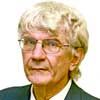





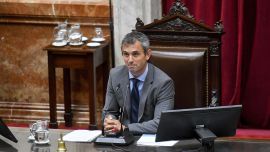


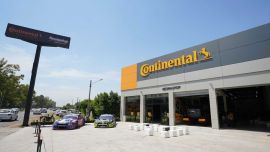






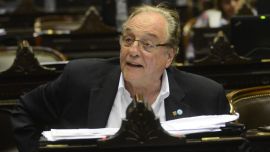
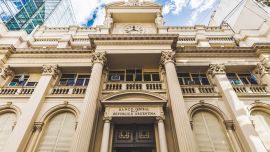


Comments